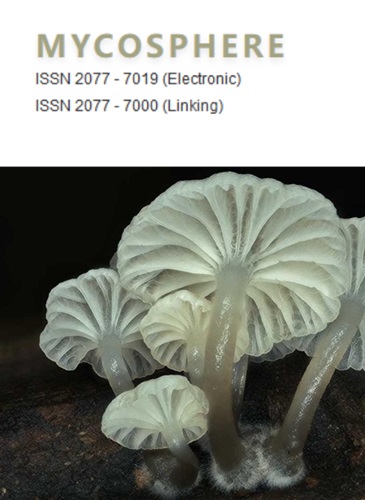Differentiation of species complexes in Phyllosticta enables better species resolution
IF 15.1
1区 生物学
Q1 MYCOLOGY
引用次数: 18
Abstract
Phyllosticta species have worldwide distribution and are pathogens, endophytes, and saprobes. Taxa have also been isolated from leaf spots and black spots of fruits. Taxonomic identification of Phyllosticta species is challenging due to overlapping morphological traits and host associations. Herein, we have assembled a comprehensive dataset and reconstructed a phylogenetic tree. We introduce six species complexes of Phyllosticta to aid the future resolution of species. We also introduce a new species, Phyllosticta rhizophorae isolated from spotted leaves of Rhizophora stylosa in mangrove forests of Taiwan. Phylogenetic analysis based on combined sequence data of ITS, LSU, ef1α, actin and gapdh loci coupled with morphological evidence support the establishment of the new species. We synonymize strains of P. capitalensis (CPC 20508 and CPC20509) under the new species. Six strains (CBS 173.77, CBS 119720, CPC 17748, CPC 20252, CPC 20269, and CBS 123404) are unnamed species based on phylogenetic analyses and nucleotide polymorphisms and probably represent new species. The phylogenetic relationships of Phyllosticta species are reappraised and suggestions are given for future work.毛竹属植物的种复体分化使物种分辨能力得到提高
毛虫分布在世界各地,是病原菌、内生菌和腐殖菌。还从果实的叶斑和黑斑中分离出分类群。由于形态特征和寄主关联的重叠,毛竹属物种的分类鉴定具有挑战性。在此,我们组装了一个全面的数据集,并重建了一个系统发育树。我们介绍了毛竹属植物的6个种复合体,以帮助将来的物种划分。本文还介绍了从台湾红树根茎的斑点叶中分离到的一新种——根茎毛蝗。基于ITS、LSU、ef1α、actin和gapdh位点的组合序列数据,结合形态学证据进行系统发育分析,支持新种的建立。我们将cpc20508和CPC20509同义命名为新种。6株菌株(CBS 173.77、CBS 119720、CPC 17748、CPC 20252、CPC 20269和CBS 123404)经系统发育分析和核苷酸多态性分析为未命名种,可能为新种。对毛竹属植物的系统发育关系进行了重新评价,并对今后的工作提出了建议。
本文章由计算机程序翻译,如有差异,请以英文原文为准。
求助全文
约1分钟内获得全文
求助全文
来源期刊

Mycosphere
MYCOLOGY-
CiteScore
30.00
自引率
8.20%
发文量
9
审稿时长
4 weeks
期刊介绍:
Mycosphere stands as an international, peer-reviewed journal committed to the rapid dissemination of high-quality papers on fungal biology. Embracing an open-access approach, Mycosphere serves as a dedicated platform for the mycology community, ensuring swift publication of their valuable contributions. All submitted manuscripts undergo a thorough peer-review process before acceptance, with authors retaining copyright.
Key highlights of Mycosphere's publication include:
- Peer-reviewed manuscripts and monographs
- Open access, fostering accessibility and dissemination of knowledge
- Swift turnaround, facilitating timely sharing of research findings
- For information regarding open access charges, refer to the instructions for authors
- Special volumes, offering a platform for thematic collections and focused contributions.
Mycosphere is dedicated to promoting the accessibility and advancement of fungal biology through its inclusive and efficient publishing process.
 求助内容:
求助内容: 应助结果提醒方式:
应助结果提醒方式:


